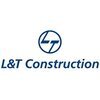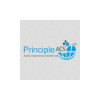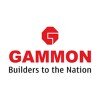Filter interviews by
Principle ACS Engineering India Senior Structural Design Engineer Interview Questions and Answers
Principle ACS Engineering India Senior Structural Design Engineer Interview Experiences
1 interview found
I applied via Approached by Company and was interviewed in Sep 2021. There were 2 interview rounds.

(4 Questions)
- Q1. Specify codes used in the design of tower design
- Ans.
The codes used in tower design include ASCE 7, AISC 360, ACI 318, and IBC.
ASCE 7 - Minimum Design Loads for Buildings and Other Structures
AISC 360 - Specification for Structural Steel Buildings
ACI 318 - Building Code Requirements for Structural Concrete
IBC - International Building Code
- Q2. Share previous design experience on telecom towers
- Q3. Codes used for drafting and detailing
- Ans.
Structural design engineers use various codes for drafting and detailing.
Structural design codes include ACI, AISC, ASCE, and IBC.
ACI (American Concrete Institute) provides guidelines for concrete design.
AISC (American Institute of Steel Construction) provides guidelines for steel design.
ASCE (American Society of Civil Engineers) provides guidelines for general structural design.
IBC (International Building Code) provid...
- Q4. What is wind gust ? and what does 3second gust and 5 second gust mean
- Ans.
Wind gust is a sudden increase in wind speed. 3-second gust and 5-second gust are the maximum wind speeds measured over a 3-second and 5-second period, respectively.
Wind gust is a rapid fluctuation in wind speed that lasts for a short duration.
It is caused by sudden changes in atmospheric pressure or wind direction.
3-second gust and 5-second gust are the maximum wind speeds measured over a 3-second and 5-second period,...
Interview Preparation Tips
- Civil Engineering
- Structural Design
- Structural Analysis
- wind load
- seismic design
Top trending discussions






Interview questions from similar companies

Structural Engineer Interview Questions & Answers
Megha Engineering & Infrastructuresposted on 12 Nov 2024
(2 Questions)
- Q1. What is ph value of bentonite
- Ans.
The pH value of bentonite typically ranges from 8 to 10.
Bentonite is a clay material commonly used in construction and engineering projects.
The pH value of bentonite can vary depending on its source and composition.
A pH value of 7 is considered neutral, so bentonite is slightly alkaline.
The pH value of bentonite is important in determining its suitability for various applications.
- Q2. What is mean fe500
- Ans.
FE500 is a grade of steel used in construction, indicating its yield strength in megapascals.
FE500 is a designation for a type of steel reinforcement used in construction
The 'FE' stands for 'iron', while '500' indicates the minimum yield strength in megapascals
FE500 steel is commonly used in reinforced concrete structures for its high strength and durability

(2 Questions)
- Q1. What is dual case in finding R value in EQ
- Ans.
Dual case in finding R value in EQ refers to considering both the worst-case scenario and the best-case scenario.
Dual case involves analyzing the structure's response to both maximum and minimum loads.
It helps in determining the range of possible outcomes for the structure.
For example, in seismic design, dual case analysis considers both the maximum and minimum seismic forces that the structure may experience.
- Q2. Why you are shifting your job
Interview Preparation Tips

Structural Engineer Interview Questions & Answers
Larsen & Toubro Limitedposted on 18 Jan 2024
I applied via Walk-in and was interviewed in Dec 2023. There was 1 interview round.
(3 Questions)
- Q1. Auto cad commands
- Q2. Trim Shortcut Key
- Q3. Fillet Command Use Which Purpose
- Ans.
The Fillet command is used in structural engineering to create a rounded corner between two lines or objects.
The Fillet command is used to create a smooth transition between two lines or objects by adding a rounded corner.
It is commonly used in structural engineering to create fillets at the junctions of beams, columns, and other structural elements.
The Fillet command can be used with different radius values to control...
Interview Preparation Tips
Skills evaluated in this interview

Structural Engineer Interview Questions & Answers
Nagarjuna Construction Companyposted on 15 Jun 2024
(2 Questions)
- Q1. What is mean by shear key
- Ans.
Shear key is a device used to transfer shear forces between two components in a structure.
Shear keys are typically used in construction joints to prevent sliding between adjacent components.
They are designed to resist horizontal forces and ensure stability.
Shear keys can be found in structures such as bridges, buildings, and dams.
Examples include shear keys in bridge expansion joints to prevent movement between bridge
- Q2. Different between columns and beams
- Ans.
Columns are vertical structural members that support loads, while beams are horizontal members that transfer loads to columns or walls.
Columns are vertical and primarily support compressive loads.
Beams are horizontal and primarily support bending loads.
Columns are typically taller than they are wide, while beams are typically wider than they are tall.
Examples: In a building, columns support the weight of the floors abo...
Interview Preparation Tips

Senior Structural Engineer Interview Questions & Answers
Tata Projectsposted on 4 May 2022
I applied via Walk-in and was interviewed in Apr 2022. There were 3 interview rounds.

(4 Questions)
- Q1. Any Structure related work
- Q2. Bridge ,rob rub,fob mib,mib
- Q3. Any questions regarding Major structure
- Q4. Civil engineering related
Interview Preparation Tips

I applied via Recruitment Consulltant and was interviewed in Sep 2021. There were 3 interview rounds.
Interview Questionnaire
4 Questions
- Q1. Ask to me about bridge structure
- Q2. Like pile foundation, open foundation, sub structure, super structure Bridge etc.
- Q3. Job location discussion
- Q4. Salary discussion
Interview Preparation Tips

Structural Engineer Interview Questions & Answers
Megha Engineering & Infrastructuresposted on 29 Oct 2023
I applied via Walk-in and was interviewed before Oct 2022. There were 3 interview rounds.

(1 Question)
- Q1. About present company and previous organization
(4 Questions)
- Q1. Related on your experience
- Q2. How can you do pile foundation
- Ans.
Pile foundations are constructed by driving or drilling vertical columns of concrete, steel, or wood into the ground to support a structure.
Determine the type of pile foundation needed based on soil conditions and load requirements
Prepare the site by clearing the area and marking the locations for the piles
Drive or drill the piles into the ground using specialized equipment such as pile drivers or augers
Ensure the pile...
- Q3. How many days you need complete the structure
- Ans.
The time needed to complete a structure depends on various factors such as size, complexity, materials, and workforce.
The duration to complete a structure can range from a few days for small projects to several months for large and complex structures.
Factors like weather conditions, availability of materials, and workforce efficiency also impact the timeline.
For example, a small residential house may take around 3-6 mo...
- Q4. What is the m-30 grade concrete
- Ans.
M-30 grade concrete is a type of concrete with a compressive strength of 30 megapascals after 28 days of curing.
M-30 grade concrete is a mix of concrete with a specified compressive strength of 30 megapascals after 28 days.
It is commonly used in construction for structural elements like beams, columns, and slabs.
The mix design for M-30 grade concrete typically includes a combination of cement, sand, aggregates, and wat...
Interview Preparation Tips

(2 Questions)
- Q1. Design of base plate
- Ans.
Base plate design involves determining the size, thickness, and material of the plate to support the structural load.
Consider the load requirements and dimensions of the column being supported
Calculate the required thickness and size of the base plate based on the load
Select a suitable material for the base plate, such as steel or concrete
Ensure proper anchorage and connection details for the base plate
- Q2. Roughly draw a base plate connection
- Ans.
A base plate connection is a structural element used to connect a steel column to a concrete foundation.
Base plate connections are typically used in steel structures to transfer loads from the column to the foundation.
The base plate is usually welded to the bottom of the column and anchored to the concrete foundation using anchor bolts.
The base plate connection design must consider factors such as load transfer, bendin...

Civil Structural Engineer Interview Questions & Answers
Larsen & Toubro Limitedposted on 22 Feb 2024
I applied via LinkedIn and was interviewed in Jan 2024. There was 1 interview round.
(1 Question)
- Q1. What an all projects you worked in oil and gas? How you design structure
Principle ACS Engineering India Interview FAQs
Tell us how to improve this page.
Principle ACS Engineering India Interviews By Designations
Interview Questions for Popular Designations
- Structural Engineer Interview Questions
- Structural Design Engineer Interview Questions
- Civil Structural Engineer Interview Questions
- Senior Structural Engineer Interview Questions
- Junior Structural Engineer Interview Questions
- Civil Structural Designer Interview Questions
- Structural Steel Detailer Interview Questions
- Structural Draftsman Interview Questions
- Show more
Interview Questions from Similar Companies
Principle ACS Engineering India Senior Structural Design Engineer Reviews and Ratings
based on 1 review
Rating in categories
|
Design Engineer
14
salaries
| ₹2.8 L/yr - ₹7 L/yr |
|
Junior Engineer
14
salaries
| ₹1.8 L/yr - ₹3 L/yr |
|
Cluster Engineer
9
salaries
| ₹2.5 L/yr - ₹4 L/yr |
|
Junior Engineer Civil
9
salaries
| ₹1.8 L/yr - ₹3.6 L/yr |
|
Senior Cluster Engineer
7
salaries
| ₹3 L/yr - ₹3.7 L/yr |

TCS

Infosys

Wipro

Tech Mahindra
- Home >
- Interviews >
- Principle ACS Engineering India Interview Questions >
- Principle ACS Engineering India Senior Structural Design Engineer Interview Questions











